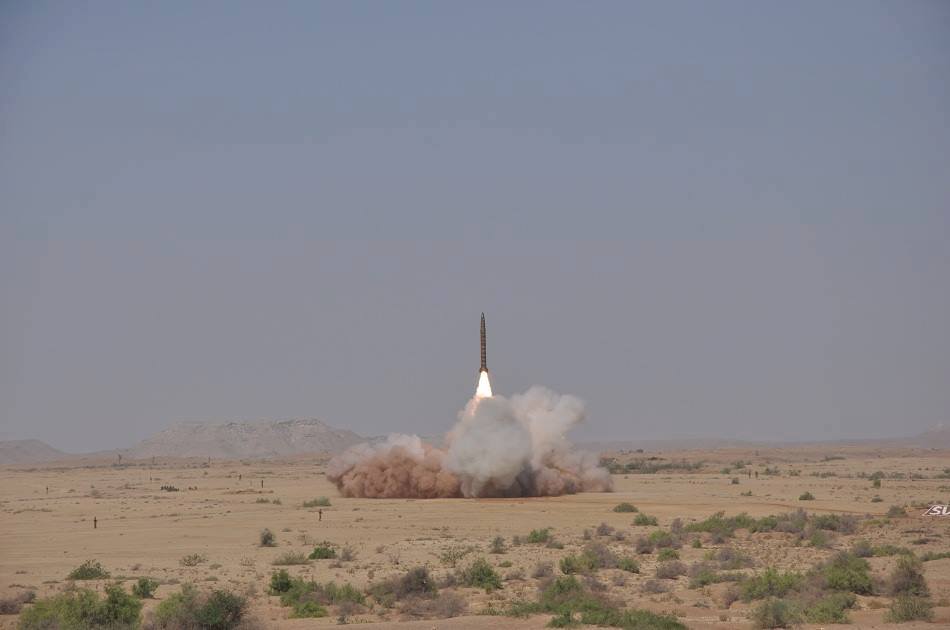This is the first in an occasional series of contributions reflecting on the lessons of the Pahalgam episode for managing and preventing future crises in South Asia. We invite future contributions from expert and practitioner communities. The views expressed belong solely to the author of the article and do not reflect their government’s position, any affiliated institutions, or that of BASIC.
No Space for War: Marka-e-Haq and the Logic of Deterrence in South Asia
The crisis was triggered by what Pakistan views as a second major false flag operation in Pahalgam, located in what Islamabad designates as Indian Illegally Occupied Jammu and Kashmir (IIOJK). The unfolding of events closely followed a now-familiar playbook. The 1995 Al-Faran hostage crisis, later chronicled in The Meadows, had raised troubling questions about how state-linked misinformation can be weaponised. Once again, India cast itself as accuser, judge, and executioner, bypassing verification and international mechanisms, and launched standoff strikes across frontiers. This crisis did not merely strain regional peace; it tested the resilience of deterrence in South Asia.
As Pakistan’s Operation Bunyanum Marsoos unfolded in response, a cardinal truth of the nuclear age was reaffirmed: there is no space for conventional war between nuclear powers. Despite India’s assertion that Operation Sindoor created a “new normal” for conventional strikes “below red lines,” what emerged instead was a reality few in New Delhi may be prepared to accept: Pakistan’s conventional deterrence held and held firm. In attempting to test Pakistan’s deterrence posture through brinkmanship, India not only miscalculated the response but failed to achieve escalation dominance — a gamble that backfired diplomatically, militarily, and in the court of global perception.
Dissecting the Crisis
India claimed that its missile and drone strikes were part of a counter-terrorism campaign. Yet no independently verified evidence was presented to substantiate this. Pakistan viewed these actions not as law enforcement but as coercive diplomacy and responded with measured restraint.
Pakistan’s joint force response was one of the most extensive in decades. Fatah-series missiles, beyond visual range munitions, and multi-domain joint fires were used to strike 26 Indian military targets, including BrahMos depots, S-400 batteries, forward HQs, and logistics nodes from Adampur to Srinagar.
This was no show of force for domestic optics; it was doctrine in motion. Pakistan’s Air Force executed precision strikes with standoff systems. The armed forces integrated joint targeting across air, land, cyber and space domains, reflecting high-level jointness and operational maturity. These operations demonstrated real-time situational awareness and disciplined escalation control that are the hallmarks of a modern, credible deterrent. For instance, Pakistan’s Navy maintained operational readiness in its assigned maritime sectors, ensuring coordinated surveillance and readiness throughout the crisis. In joint briefings, the Navy emphasized its role in maintaining maritime situational awareness and securing coastal zones, consistent with its contribution to integrated joint services operations.
India’s “New Normal” Is a Strategic Mirage
Prime Minister Modi’s remarks following Operation Sindoor were heavy with bravado: “ghus ke maarenge” (“strike deep inside”), “mitti mein mila denge” (“grind them to dust”), and the claim of a new benchmark. But strategic posturing does not alter military realities.
Since 9/11, India has blurred the distinction between armed resistance under occupation and acts of terror. International humanitarian law — notably the Additional Protocol to the Geneva Conventions — affirms the right of people under foreign occupation to resist, including through armed struggle. Kashmir, like Palestine, remains a recognized dispute — not an outpost of “terror.” Pakistan, of course, unequivocally condemns all acts of terrorism, especially those targeting civilians. The Pahalgam incident warrants impartial international investigation, grounded in evidence rather than emotion.
India’s mischaracterization serves tactical political goals: justifying militarization of IIOJK, sidestepping bilateral talks, diluting the right to self-determination, and repackaging its actions as self-defence. Yet using conflict for domestic electoral gains brings diminishing returns and rising risks. India’s actions in this crisis seems to reflect the behavior of a revisionist state, one that seeks to reshape borders, bypass international norms, and redefine the thresholds of the conflict spectrum.
Thanks to international mediation, a ceasefire was re-established. India agreed to DGMO-level re-engagement. This tacit reliance on external actors raises a deeper question: has India quietly redefined its long-cherished ideal of strategic autonomy? If sustained, it may open the door to a structured bilateral dialogue. As Churchill once said, “To jaw-jaw is always better than to war-war.”
Deterrence Was Not Broken — It Was Enforced
Some Western and Indian commentators have suggested that nuclear deterrence didn’t work simply because the crisis involved conventional strikes. This view misunderstands the layered architecture of deterrence. Deterrence in the South Asian context is not limited to preventing nuclear use alone; it encompasses the prevention of war itself, across all domains. In this crisis, it was cross-domain deterrence: nuclear, conventional, cyber, and informational that held the line. No other nuclear-armed state has so frequently resorted to cross-border strikes under the nuclear umbrella or used unverifiable incidents as pretexts for escalation. India’s behaviour in this regard is an outlier in global nuclear conduct, not a norm. While the precise counterfactuals remain speculative, the threshold for total war was not crossed due to a combination of timely third-party mediation and Pakistan’s rapid imposition of costs. The integrated military response, alongside diplomatic outreach, helped shape escalation control before further descent became inevitable.
Speculation that “space for war has been won under Pakistan’s red lines” remains just that – speculation. Pakistan has never published formal red lines. Like other nuclear powers, it deliberately maintains calculated ambiguity. Deterrence here is not a traffic-light system of red, yellow, and green; it is a spectrum of responses shaped by perception, posture, and psychology. It is constructed in the mind of the adversary, not listed in declaratory policy. Unlike in 2019, the National Command Authority was not convened, inter alia due to greater confidence in conventional deterrence through conventional platforms like Fatah missiles. The difference underscores the evolution in Pakistan’s response doctrine and force posture: strategic prudence nested within operational clarity.
Cross domain nuclear deterrence held not due to invisibility, but because highly integrated response mechanisms operated as designed. Recent commentary, including by Western media, speculated that Indian strikes near critical military infrastructure risked a “decapitation” scenario — potentially galvanizing third-party intervention. Such narratives often overstate the fragility of deterrence and understate its layered resilience. Like all nuclear-armed states, Pakistan’s command and control architecture is designed with survivability in mind — technically, institutionally, and doctrinally. As strategic planners well understand, the “always/never” dilemma is not resolved through rhetoric, but through robust, redundant systems, and measured signalling. The fact that the crisis was credibly managed at the conventional level — without overt nuclear posturing or escalation — reflects not vulnerability, but maturity.
Narratives and Responsibility in Crisis Management
India’s crisis playbook increasingly resembles that of other unresolved conflicts: provoke, claim victimhood, retaliate disproportionately, and then seek de-escalation on favourable terms. But this time, the mask slipped.
The Balochistan Liberation Army (BLA) openly declared itself India’s “military arm” from Pakistan’s western front. This was not bravado; it was a veritable confession of proxy warfare. India’s plausible deniability has worn thin. Its proxies are vocal. Funding trails will become increasingly traceable. The narrative of innocence would not withstand scrutiny.
In parallel, Pakistan engaged its diplomatic channels extensively to de-escalate and address disinformation. Missions in New York, Washington, Beijing, Ankara, Riyadh, Tehran, Rome, and key European capitals presented Pakistan’s perspective. Coordinated outreach, led by the Deputy Prime Minister and Foreign Secretary, contributed to crisis de-escalation and affirmed Pakistan’s commitment to regional restraint.
Strategic Restraint, Not Submission
Pakistan’s decision to avoid civilian targets, limit platform use, and prevent escalation was not weakness, it was disciplined strategic calculation. The choice to respond with precision, avoid airspace breaches, and maintain clear firebreaks between conventional and nuclear thresholds reflected maturity, not fear. Pakistan’s full-spectrum deterrence capability held firm. Restraint was not imposed by external actors; it was internally calibrated, and rightly so.
This disciplined posture should not be mistaken for strategic passivity. It reinforced Pakistan’s full-spectrum deterrence credibility while denying India the ability to redefine engagement norms. In doing so, Pakistan conveyed a clear message: deterrence is about measured capability, not performative risk. The crisis reaffirmed that escalation control is a strategic asset — not a sign of hesitation.
In the Nuclear Age, War Itself Is the Enemy
As Denzel Washington’s character–Lieutenant Commander Ron Hunter–reminds us in Crimson Tide, “In the nuclear age, the true enemy is war itself.” South Asia must remember this, not as poetry, but as policy.
The 1985 Reagan-Gorbachev axiom that “a nuclear war cannot be won and must never be fought” remains valid even under stress-tests, as reaffirmed by NATO and non-NATO frameworks since. Its logic must extend to proxy wars and conventional escalation. There is no meaningful “new normal” when a nuclear peer tests escalation ladders. Any attempt to normalize standoff strikes, drone incursions or doctrine of unilateral action under the nuclear umbrella risks global mimicry, weakening international legal norms.
Pakistan’s Marka-e-Haq, the Righteous Campaign, not only avenged innocent civilian lives but it also restored balance. It’s a reminder that sovereignty, balance, and legitimacy must be preserved without inviting catastrophe. It also reaffirms that IIOJK remains a disputed territory. Its final status lies not in missiles, but in diplomacy, justice, and recognition of self-determination.
War between nuclear-armed states is not a strategy — it is a gamble cloaked in bravado. The illusion of space for war is just that: an illusion. In the nuclear age, such space does not exist without courting catastrophe.
Attempts to redraw boundaries through coercion risk not only regional instability but the long-term erosion of the aggressor’s credibility. This crisis reaffirmed that restraint is not weakness, and retaliation is not recklessness — both are instruments of deterrence when wielded with discipline.
For peace to prevail, the world must reject doctrines that normalize military adventurism. Instead, it must demand accountability from all nuclear powers — especially those who challenge global norms. The path forward lies not in stand-off posturing, but in structured dialogue, strategic restraint, and commitment to international law. Only diplomacy can achieve what war never will: enduring peace, stability, and justice. As the dust of this crisis settles, let it not just be remembered for what was avoided — but for what could now be built: a renewed commitment to peace through responsibility.
Dr Zahir Kazmi is Arms Control Advisor at the Strategic Plans Division, where he has also served as the Director General of the Arms Control & Disarmament Affairs Branch.

